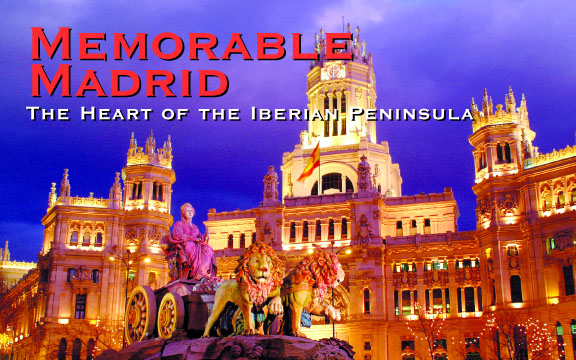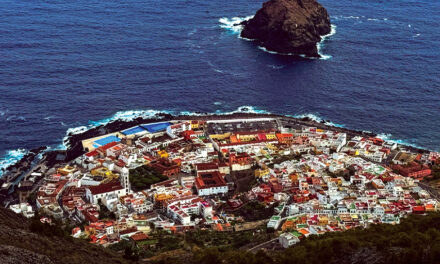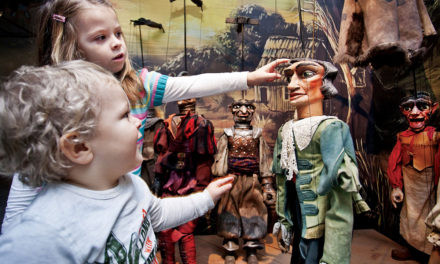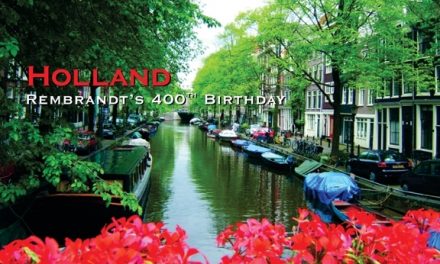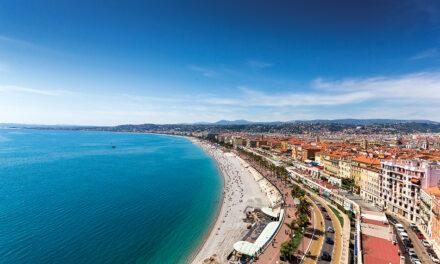Memorable Madrid
The Heart of the Iberian Peninsula
by Michael Morcos
Published in the January-February 2005 Issue of Canadian World Traveller
Photos by M. Morcos and Courtesy of Instituto de Turismo de España, TURESPAÑA www.tourspain.toronto.on.ca
Visiting Spain is not only about sun, great cuisine, and a warm welcome, but also about its rich heritage of monuments and dazzling natural environments. There is a perfect Spanish destination to suit everyone’s expectations, and due to its semi-arid Mediterranean climate, Madrid is considered as an all-year-round destination. This was reaffirmed on my recent five-day trip to Madrid and environs organized by the Tourist Office of Spain in Canada and Air France for Canadian travel writers.
I had visited Spain quite a while ago during my backpacking days and was amazed this time at how much Madrid had grown and changed, whilst still retaining its legendary Iberian charm. Over the past decade, the Madrid Region’s population had dramatically increased and currently stands at over five million. Madrid is now considered by many observers to be one of the most dynamic, liberal and tourist-friendly European capitals.
 Day One: Getting There
Day One: Getting There
After a Sunday evening departure from Montreal’s Pierre Elliot Trudeau International Airport with Air France, I arrived at Charles De Gaulle Airport in Paris on the following Monday morning for a connecting flight to Madrid’s Barajas International Airport, which lies just 17 kilometres outside of the city. Our tour group, accompanied by our Tourist Office of Spain representative, was whisked to the ultra-modern and well-appointed five-star Hotel Hesperia, located in the heart of Madrid’s commercial and business centre at 57 Paseo de la Castellana (www.hesperia-madrid.com).
After checking in, we enjoyed a delectable lunch at the hotel’s Manzana Restaurant. Although experiencing the customary jet-lag after a transatlantic flight, I was impressed by the range of virgin olive oils that were available at our table for the Spanish custom of bread-dipping prior to the main course. The restaurant also offered a fine selection of wines that complemented its impressive menu.
Out and About
I spent the rest of Monday afternoon exploring downtown Madrid by foot and on the city’s extensive subway system (the Metro). There are 190 stations on 12 interconnected lines that run for some 226 kilometres (www.metromadrid.es). Practically every attraction or point-of-interest is close to one of these stations. During my unescorted walk, I was impressed by the amount of new construction sites and the constant bustle in the city. Madrid’s young people were attired in the latest fashions and sported all the modern portable gadgetry.
That night we were wined and dined at the Restaurante El Botin, located at 17 Calle de Cuhilleros. El Botin was founded in 1725 and is the world’s oldest restaurant, according to the Guiness Book of Records. The menu featured fish and seafood dishes of hake, sole, clams, shrimps and squids, as well as the traditional Spanish fare of roasted or grilled meats and roast chicken. The house specialities are hearty servings of roasted suckling pig and baby lamb. El Botin’s historic exterior and interiors, including its vaulted wine cellar which now serves as one of its four dining rooms, are definitely key ingredients of an unforgettable dining experience (www.botin.es).
Day Two: Touring Madrid
We began our escorted tour of Madrid’s attractions on Tuesday morning. The city has been the capital of Spain since 1561. Founded by the Moors in the 9th Century, Madrid is currently a modern, active city offering innumerable attractions to the visitor. But its architectural heritage is immense. Its beginnings as a medieval village have been preserved around the Plaza de la Paja.
Madrid of the Austrias
We visited the quarter known as Madrid of the Austrias, near the Puerta del Sol. This is the traditional city centre, which was constructed in the Golden Age. In this area are found the Plaza Mayor, which is colonnaded and considered to be one of the finest in Spain, and the Plaza de la Villa, with its beautiful City Hall Building. Both are Baroque in style and date from the 17th century.
 Palacio Real de Madrid
Palacio Real de Madrid
Next was a tour of the Royal Palace, surrounded by gardens that are now partially open to the public. It is a magnificent example of 18th century palatial art. The Royal palace of Madrid was built in the eighteenth century by order of Philip V on an ancient fortress site that had previously been a Muslim castle.
Sachetti began the work in 1738 and it was completed in 1764. Sabatini created the southeast wing and the grand staircase or staircase of honour. The base of the building is square with a large central courtyard. Principe (Prince) Doorway, on the east side of the building leads to the central courtyard. The Sabatini gardens as well as the Campo del Moro (Moor’s Field) are two other notable attractions of the palace, along with all of its façades. There are conflicting views as to categorising the palace within a specific style, as some parts are more Baroque while others are Neoclassical in essence depending on the architect.
There are many interesting rooms on public view inside the building, the most outstanding of which are Alabarderos Hall, Columnas (Columns) Hall, Espejos (Mirrors) Hall and the King Charles III of Spain’s Room. The palace walls are adorned by paintings by Velazquez, Goya, Rubens, El Greco and Caravaggio, among other masters.
 After an excellent lunch at La Broche located in the Hotel Miguel Angel (www.occidentalmiguelangel.com), we proceeded to the Prado, the Spanish art gallery par excellence. The Prado is not only important to Spain but also to the entire world, as it houses one of the most spectacular pictorial collections ever assembled under one roof.
After an excellent lunch at La Broche located in the Hotel Miguel Angel (www.occidentalmiguelangel.com), we proceeded to the Prado, the Spanish art gallery par excellence. The Prado is not only important to Spain but also to the entire world, as it houses one of the most spectacular pictorial collections ever assembled under one roof.
The Prado
The museum is not only home to one of the largest art gallery’s in the world, it also houses sculptures, drawings and other artistic treasures. The exhibits were in large part acquired from the royal collections of Carlos IV. The works are distributed over three floors, by author, schools, and themes.
Of worthy note is the collection of Spanish painting from the 17th and 18th century, the period of the incomparable Velázquez and Goya. There is an extensive collection of their respective works exhibited in these rooms, amongst them the fabled Goya “Majas”, the clothed one and the naked one. The content of the museum is of incalculable economic and artistic value. ‘El jardín de las Delicias’ by El Bosco or the famous ‘Las Meninas’ by Velázquez are but two essential works (a difficult choice) that must not be missed.
Flamenco
That night, after a short rest at the hotel, we were taken to the Corral de la Moreria for dinner and a show featuring the flamenco, a truly Spanish art (www.corraldelamoreria.com). To feel the passion and energy it transmits is an extraordinary experience. While in spain, everyone should visit a tablao (flamenco club) at least once and experience this “universal” art, whose roots lie in the deepest of Spanish feeling.
 In flamenco, heartfelt song, accompanying guitar, rhythmic tap-dance and clapping, all come together with the dance of great artists, who often appear anonymously. Audiences are unconsciously infected by the emotion and feeling that this musical genre transmits.
In flamenco, heartfelt song, accompanying guitar, rhythmic tap-dance and clapping, all come together with the dance of great artists, who often appear anonymously. Audiences are unconsciously infected by the emotion and feeling that this musical genre transmits.
There are many flamenco clubs in Spain (including the Madrid Region), although they are most frequently found in Andalusia. At a tablao you can have a drink, sample some tapas, or even dine on some full-blown Spanish cuisine. Over the years, the Corral de la Moreria has attracted an impressive international clientele, as attested to by the huge wall in the entrance hall covered with photos of famous personalities from the entertainment, sports and political worlds.
Contact the local Tourist Office wherever you are staying in Spain for more information. Bearing in mind that tablao clubs usually have a limited capacity, it is well worth booking a table in advance.
Day Three: San Lorenzo de El Escorial
On Wednesday, we left Madrid for the San Lorenzo de El Escorial, located about 41 kilometres northwest of the city, in the Guadarrama Mountains. This was the site chosen by Phillip II for his magnificent Palace-Monastery. The work of Juan de Herrera, the greatest genius of Spanish Renaissance architecture, it was the grandest Spanish artistic undertaking of its time. Its monumental importance is as great as the influence it once exercised over the territories of the Spanish Empire. It has been declared a World Heritage Site by UNESCO.
 Philip II used this Royal Residence as a pantheon for his family. Building work began in 1563, under the direction of Juan de Toledo. After his death, Juan de Herrera took up the reigns and completed the work in 1584. The building has been made with granite rock and is divided into three vertical sections, with the King’s Courtyard in the centre. There are four towers on the sides of the building, that measure 55 metres tall and have been adorned with round metal balls at the top.
Philip II used this Royal Residence as a pantheon for his family. Building work began in 1563, under the direction of Juan de Toledo. After his death, Juan de Herrera took up the reigns and completed the work in 1584. The building has been made with granite rock and is divided into three vertical sections, with the King’s Courtyard in the centre. There are four towers on the sides of the building, that measure 55 metres tall and have been adorned with round metal balls at the top.
There are several rooms within the building which include Ministries, a welcoming room, a religious service room, and a Prince and Princesses room that are all joined together by several arches. The church has a Greek-cross base, and the chapel holds the funeral monuments of Charles V of Spain and Philip II. The library also deserves special mention. It lies on the second floor of the west wing and contains around 45,000 books dating back to the fifteenth and sixteenth centuries. This impressive complex contains 15 cloisters, 13 oratories, 86 staircases, 88 fountains, over 1600 paintings, 9 towers and 73 sculptures. Visitors to Madrid should not miss this short one-day excursion.
After our tour, we had lunch at La Cueva Restaurant, a rambling, 18th-century former inn, which specialises in the regional cuisine of Castile-La Mancha.
Valle de los Caídos
Taking advantage of our visit to El Escorial, we took the short trip 13 kilometres north to the Valle de los Caídos (Valley of the Fallen), a grandiose funerary monument built between 1940 and 1956 in memory of the victims of the Civil War of 1936.
This lovely, secluded valley was chosen for the location of the monument which stands in the mountains of Guadarrama, in a landscape of granite rock and green pines. An imposing stone cross, some 150 metres tall with arms reaching some 46 metres wide, rises over the basilica that was involuntarily carved 250 metres into the rock face by Republican prisoners of war, some of them dying during the 16 years that it took to build.
In the basilica, there is a white headstone that covers the tomb of Francisco Franco, the infamous dictator of Spain from 1936 to his death in the 1970s. Hidden from public view are the 40,000 tombs of the soldiers of the warring factions of the Civil War.
Many Spaniards consider this monument to be a symbol of the dictatorship (which thankfully ended with Franco’s death) and therefore, it has been shunned by many tourists. Nevertheless, the magnificence of its views and the monument itself make a visit highly recommended.
On returning to Madrid, we had a well-earned rest at the hotel before being escorted to dinner at the fabulous Cafe de la Opera, where the waiters are lyrical singers! While serving the courses, the waiters and the chef took turns singing arias from famous operas, much to the delight of the patrons. The restaurant is located in the Hotel Opera at 2 Cuesta de Santo Domingo (www.hotelopera.com), right in the very heart of the historical centre of Madrid, in front of the Teatro de la Opera and only a few metres from the Royal Palace.
Day Four: Toledo
On Thursday, we made the 68 kilometre trip Southwest from Madrid to Toledo, the historic capital of the autonomous region of Castile-La Mancha. Surrounded on three sides by a bend in the Tagus River, Toledo stands atop a hill overlooking the arid plains of New Castile, a natural fortress in the center of the Iberian Peninsula. It was the longstanding capital of Spain, though it lost that title to Madrid in the 1500s.
Toledo is one of the Spanish cities with the greatest wealth of monuments. It is known as the “city of the three cultures”, because Christians, Arabs and Jews lived together there for centuries. Behind its imposing walls, Toledo still preserves its artistic and cultural legacy in the form of churches, palaces, fortresses, mosques and synagogues.
 This great diversity of artistic styles makes the old quarter of the capital of La Mancha a real open-air museum. This has led to it being declared a World Heritage Site by UNESCO. Nearly every stage of Spanish art and architecture are represented in Toledo, which has Moorish-Mudejar-Jewish buildings, such as the Transito and Santa Maria la Blanca Synagogues; Gothic structures, such as the splendid cathedral: and many well-preserved Renaissance buildings.
This great diversity of artistic styles makes the old quarter of the capital of La Mancha a real open-air museum. This has led to it being declared a World Heritage Site by UNESCO. Nearly every stage of Spanish art and architecture are represented in Toledo, which has Moorish-Mudejar-Jewish buildings, such as the Transito and Santa Maria la Blanca Synagogues; Gothic structures, such as the splendid cathedral: and many well-preserved Renaissance buildings.
In the 16th century, the city became home to El Greco, and Toledo has many of his paintings, among which is “The Burial of the Count of Orgaz”, his masterpiece which is housed in the Mudejar Church of Santo Tome. Among its many museums, of special note is the one located in the old Santa Cruz Hospital.
During our fascinating day-long tour of Toledo, we paused for lunch at the Parador Hotel (www.parador.es). Paradores are hotels that are located in restored castles, palaces and convents across Spain, rescuing them from ruin and abandonment and preserving Spain’s historical and cultural heritage. Located on the Cerro del Emperador by the river Tagus, Toledo’s Parador offers an incomparable panoramic view of the monumental buildings of Toledo, including its most precious jewels, such as the cathedral, the Alcázar (fortress) and the synagogues.
Typical dishes from Castilla-La Mancha are offered in the Parador’s dining room. Our group discovered tasty regional dishes such as stewed partridge, roast lamb, cheese and honey ice cream, and Toledo’s famous marzipans.
After retuning to Madrid, we had another Spanish culinary delight in store. On the last night of our visit, we dined at La Barraca (www.interocio.es/labarraca), located 29 Calle Reina. La Barraca is reputed to serve “The Best Paella in Madrid.” They are said to have been serving it since 1935. Anyone who wants to sample true Spanish paella will not be disappointed.
The “Paella Mixta” was incredible and is meant to serve two. The flavor combination of the saffron rice mixed in with the seafood and chicken were absolutely mouth-watering. Combined with an excellent Spanish wine, friendly service and a cozy ambience, this restaurant was a fitting finale to a memorable sojourn in today’s exciting Madrid.
Day Five: The Return
As I checked out from Madrid’s Hotel Hesperia, thanking the hotel’s management and staff for their gracious hospitality, I was still spellbound by the amazing amount of sights, sounds and tastes I had experienced in just five days. Imagine if I had had more time…
On the flight from Madrid to Paris and the connecting flight back to Montreal with Air France, my head was filled with memories of the fun-loving people of Madrid, the rhythmic sounds of Flamenco, and the delectable aroma of Paella.
A Note about Air France
Air France offers the best route from Montreal to Madrid (via Paris), as neither Iberia nor Air Canada flies directly to Spain and necessitate making connections through US airports. Moreover, there are obvious advantages in using one carrier for the entire trip. On my recent trip, I had the good fortune of being upgraded to Air France’s business class for the transatlantic flights and I greatly appreciated being treated to the extra comfort and perks.
For More Info:
Tourist Office of Spain in Canada
2 Bloor West,
Toronto, ON M4W 3E2
Tel.: (416) 961-3131
E-mail: toronto@tourspain.es
www.tourspain.toronto.on.ca
Spanish Consulate
1, Square Westmount, Bureau 1456
Westmount, QC H3Z 2P9
Attn: Consul General Montréal
Tel.: (514) 935-5235
E-mail: conspmontreal@mail.mae.es
www.embaspain.ca
Air France
2000, rue Mansfield, Bureau 1510
Montréal, QC H3A 3A3
Tel.: (514) 847-1106
Toll-Free: 1-800-667-2747
E-mail: See Website
www.airfrance.com/ca
Iberia Airlines
JFK Int’l Airport, Terminal 8
New York NY
Toll-Free: 1-800-772-4642
E-mail: iberia.us@iberia.com
www.iberia.com/OneToOne/gateway_us.jsp

